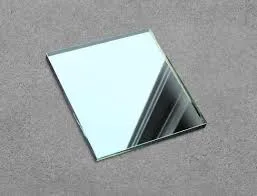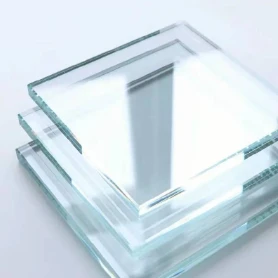Exploring the Intricacies of 5mm Tinted Glass Pricing

The realm of tinted glass is vast and varied, with 5mm tinted glass being a popular choice for a variety of applications ranging from residential to commercial settings. Understanding its pricing involves diving into several key factors that influence costs, ensuring a knowledgeable purchase decision.
1. Manufacturing Processes and Material Quality
At the heart of 5mm tinted glass pricing is the manufacturing process and the quality of materials used. Advanced production techniques and premium quality glass contribute significantly to costs. Tinted glass undergoes specialized treatments to achieve desired colorations and light filtration qualities. The use of state-of-the-art machinery not only enhances these qualities but also ensures durability and resilience against various environmental factors, thereby reflecting on its market price.

2. Supply Chain Dynamics
The global supply chain is another pivotal determinant of pricing. The cost can fluctuate based on the availability of raw materials and logistics involved in transportation to distribution centers. Economic fluctuations, trade tariffs, and transportation costs can all play a role. For instance, unforeseen geopolitical tensions or natural calamities can disrupt material supply or increase transportation costs, thereby impacting the end price of the tinted glass.
3. Market Demand and Applications
The demand for 5mm tinted glass often peaks in sectors prioritizing both aesthetic qualities and functional benefits such as energy efficiency. High-demand factors include construction booms in urban areas or increased adoption in energy-conscious architectural designs. The dual benefits of reducing glare and enhancing privacy make tinted glass an attractive option for modern buildings. These demand dynamics can lead to variations in price due to increased competition or scarcity during peak construction seasons.
5mm tinted glass price
4. Regulations and Certifications
Compliance with local and international safety standards and certifications is a critical factor affecting price. A glass product adhering to stringent regulatory laws, such as those mandating environmental sustainability or enhanced safety, often incurs higher production costs.
These costs are then reflected in the final pricing. For example, regulations demanding glass that can withstand high temperatures or has shatterproof qualities would increase the product's base cost.
5. Region-Specific Costs
Regional differences greatly influence glass prices, with processing plants located in areas with lower overhead costs generally offering competitive pricing. Additionally, local taxes, tariffs, and installation costs vary widely, further impacting the overall expense for both consumers and businesses. Customers in economically advanced regions may face higher installation labor charges compared to their counterparts in developing areas.
6. Technological Advancements
Innovations in glass technology have revolutionized the market, enabling the creation of more efficient and diverse products. The incorporation of cutting-edge features, such as self-cleaning capabilities or enhanced UV protection, adds to the manufacturing complexity and thus the cost. However, these advancements can provide long-term savings on energy and maintenance, making them a worthwhile investment.
7. Customizability and Aesthetic Customization
Customization in terms of tint shades, texture, and additional features like etching or smart tint technologies affects pricing. Custom orders often require bespoke manufacturing processes and incur additional labor and time expenses. Moreover, designers looking for specific aesthetic qualities will likely factor in higher costs for such customizations.
In summary, while the base cost of 5mm tinted glass might seem straightforward, several components intricately influence its final pricing. By considering factors like manufacturing quality, supply chain variables, market demand, and region-specific costs, consumers and businesses can make informed decisions that align with their budget while ensuring that their aesthetic and functional requirements are met. This comprehensive understanding fosters confidence and satisfaction in one's investment in tinted glass solutions.



